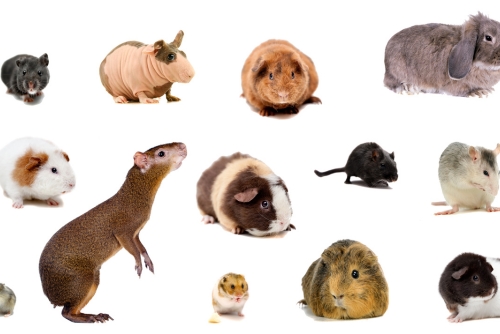Rodents are some of the most common pests in households and commercial properties. While these small creatures may appear harmless, they pose significant risks to health and property. Understanding the different types of rodents and how to control them is essential for maintaining a safe and rodent-free environment. This guide will help you recognize common rodents and offer practical steps to manage their populations.
The Importance of Rodent Control
Rodents such as mice and rats are known for their ability to carry diseases, contaminate food, and cause structural damage. Their presence in homes can lead to a variety of problems, from chewed electrical wires that pose fire hazards to health risks like the spread of salmonella and hantavirus. The earlier a rodent infestation is identified and addressed, the easier it is to manage and prevent future occurrences.
At Agile Pest Control, rodent control is a critical aspect of maintaining homes and businesses free from these unwanted intruders. Knowing the key characteristics of various rodent types can help in the development of an effective rodent control strategy.
Common Types of Rodents
Different rodent species can invade homes and properties, and each requires unique approaches for control. Here are some of the most common rodents to be aware of:
1. House Mice
House mice are small rodents, typically gray or light brown, and they are one of the most common household pests. Known for their ability to breed quickly, house mice can go unnoticed until their population has significantly grown. Signs of their presence include droppings, gnawed furniture, and scratching noises in walls or ceilings.
2. Norway Rats
Norway rats, sometimes referred to as brown rats, are larger than house mice and can be aggressive in nature. These rodents are commonly found in basements, crawl spaces, and other low-lying areas of homes. They are skilled burrowers and can cause extensive damage to foundations and insulation by digging tunnels and chewing through materials.
3. Roof Rats
Roof rats, also known as black rats, prefer elevated areas such as attics, roofs, and trees. They are excellent climbers and often make their way into homes through overhanging branches or power lines. Roof rats are slimmer than Norway rats but can still cause significant damage to homes by gnawing through wires and creating fire hazards.
4. Deer Mice
Deer mice are found in more rural settings and can sometimes invade homes near fields or wooded areas. These rodents are a significant concern because they are known carriers of hantavirus, which can be transmitted to humans. They tend to nest in secluded areas like attics and garages.
5. Voles
Voles, sometimes referred to as field mice, are small rodents that live outdoors in gardens and yards. Though they don’t typically invade homes, they can cause damage to landscaping by eating plant roots and burrowing underground. They are particularly problematic for homeowners with gardens or extensive lawns.
Signs of a Rodent Infestation
Recognizing the signs of a rodent infestation early can help homeowners take action before the problem escalates. Here are some common indicators that you may have a rodent problem:
- Droppings: Rodents leave behind small, pellet-shaped droppings near food sources, along baseboards, and in hidden areas like cupboards.
- Gnaw Marks: Rodents have strong teeth that constantly grow, which is why they chew on furniture, wiring, and other materials.
- Scratching Noises: You may hear scratching sounds in walls, ceilings, or attics, especially at night when rodents are most active.
- Nests: Rodents build nests from shredded materials like paper, fabric, or insulation. These are often found in hidden corners of the home.
- Foul Odors: A strong, musky odor can be a sign of a large rodent infestation.
Effective Rodent Control Methods
Once you’ve identified a rodent problem, the next step is taking action to control it. There are several methods available for rodent control, ranging from preventative measures to active removal. Here are some of the most effective strategies:
1. Sealing Entry Points
One of the first steps in rodent control is preventing them from entering your home. This involves sealing off all potential entry points, such as cracks in walls, gaps around doors and windows, and spaces where utilities enter the home. Rodents can squeeze through incredibly small openings, so it’s essential to be thorough in this process.
2. Trapping
Trapping is a common and effective method for removing rodents from your home. There are different types of traps available, including snap traps, live traps, and glue traps. Snap traps are the most humane and effective option for quickly eliminating rodents. Trapping is best used in combination with other methods, such as sealing entry points and sanitation.
3. Baiting
Rodent bait stations can be used to lure rodents out of hiding. These bait stations contain poison that the rodents consume, eventually leading to their death. However, baiting should be done carefully, especially in homes with pets or small children, to prevent accidental poisoning.
4. Professional Rodent Control Services
For large infestations or persistent rodent problems, it’s often best to call a professional pest control service like Agile Pest Control. Professionals have the tools, expertise, and knowledge to handle even the most severe rodent infestations. They can also provide long-term prevention tips and ensure that rodents don’t return.
Preventing Future Rodent Infestations
Once you’ve dealt with a rodent problem, it’s important to take steps to prevent future infestations. Here are some tips to help keep rodents at bay:
- Maintain Cleanliness: Rodents are attracted to food and shelter, so keeping your home clean and free of clutter is crucial. Store food in airtight containers and regularly clean up crumbs and spills.
- Proper Waste Management: Ensure that garbage is stored in sealed containers and disposed of regularly. Compost bins and outdoor trash cans should be rodent-proof.
- Landscaping Maintenance: Trim tree branches and shrubs that are close to your home to prevent rodents from using them as a bridge into your house. Keep grass and vegetation around your home trimmed and free of debris.
- Monitor for Signs of Rodents: Regularly inspect your home for signs of rodent activity, especially in attics, basements, and other hidden areas. Early detection can prevent a small issue from becoming a major infestation.
Conclusion
Rodents can be more than just a nuisance; they can threaten your health and property. By understanding the different types of rodents, recognizing the signs of an infestation, and taking proactive steps for control, you can protect your home from these unwelcome pests. If you’re dealing with a rodent problem, Agile Pest Control offers professional services to safely and effectively manage rodent populations.



